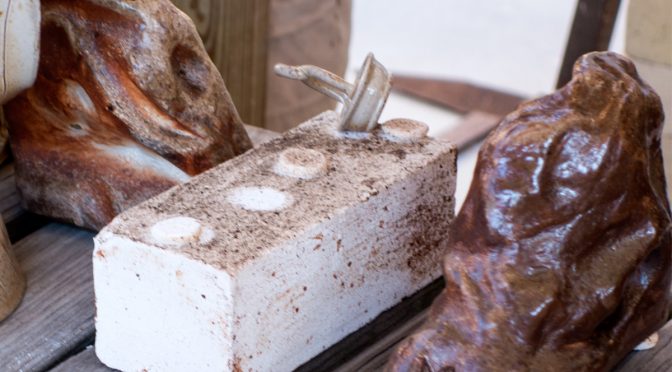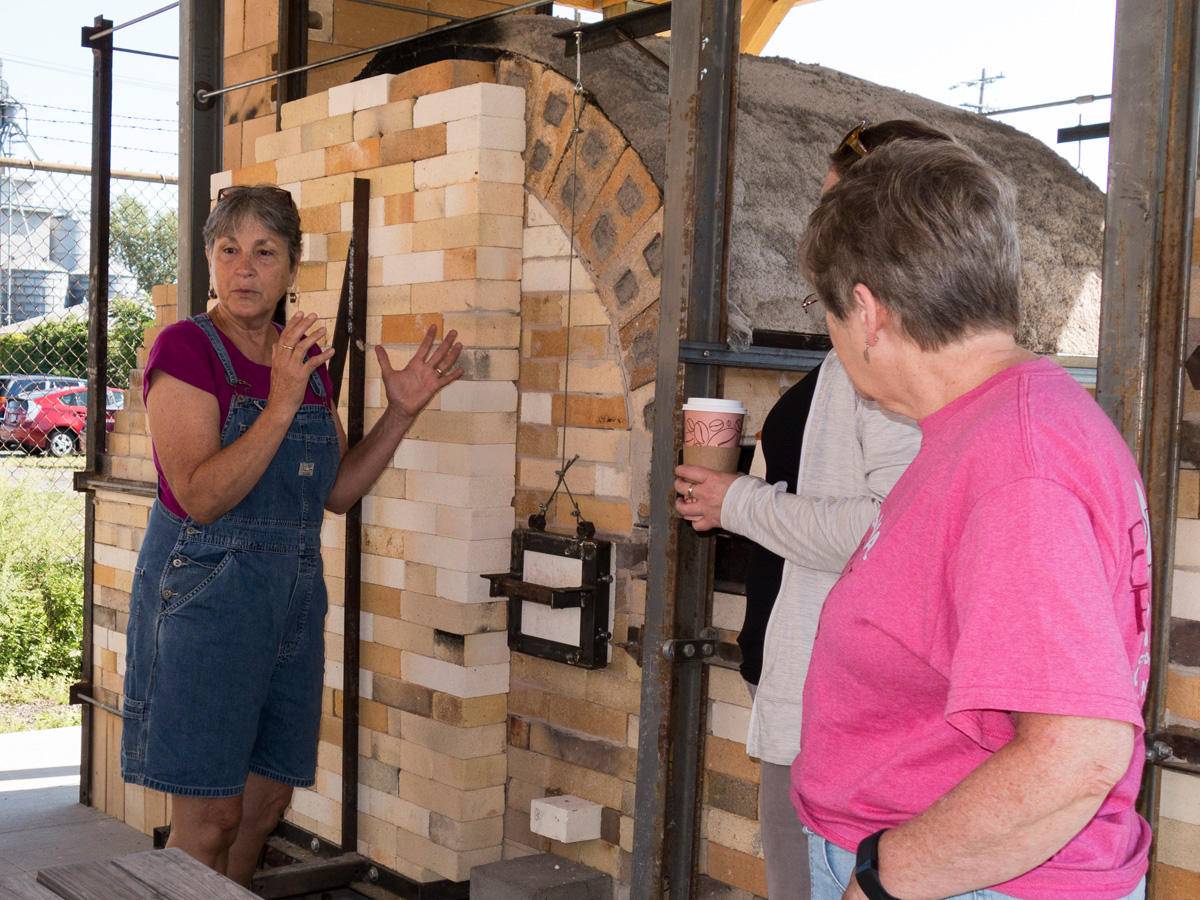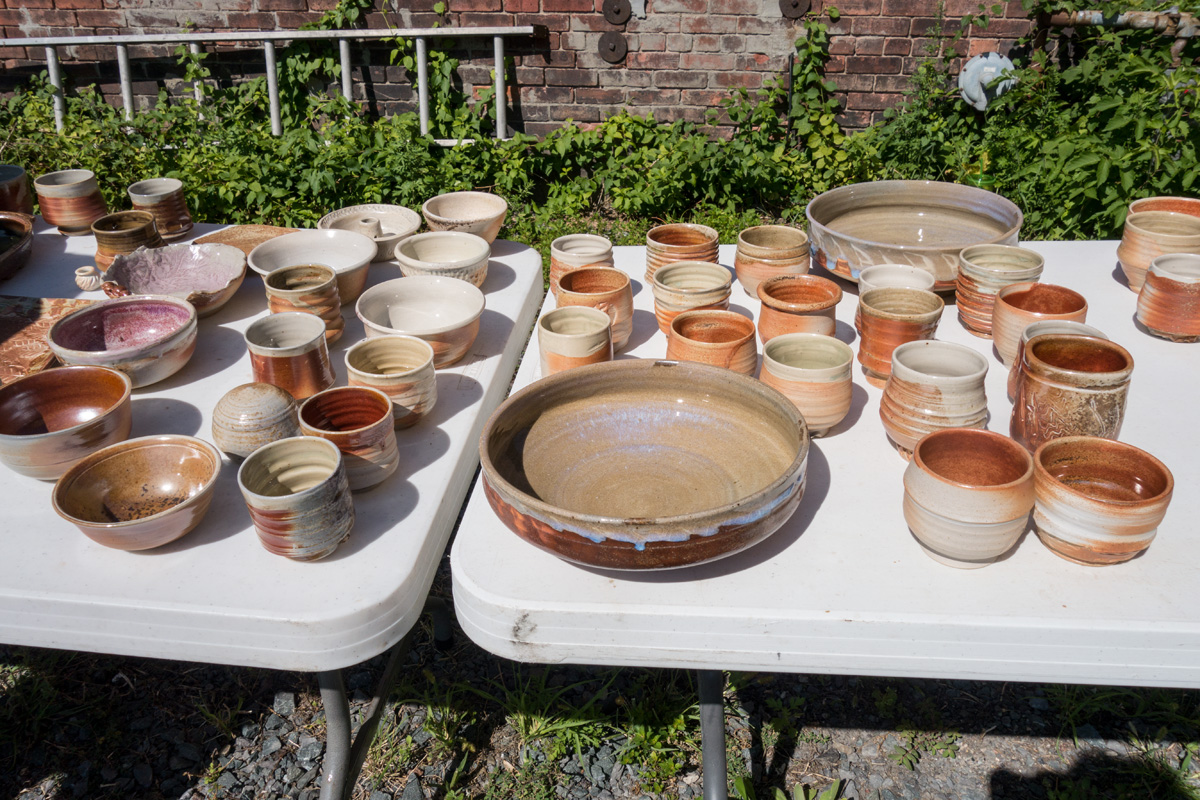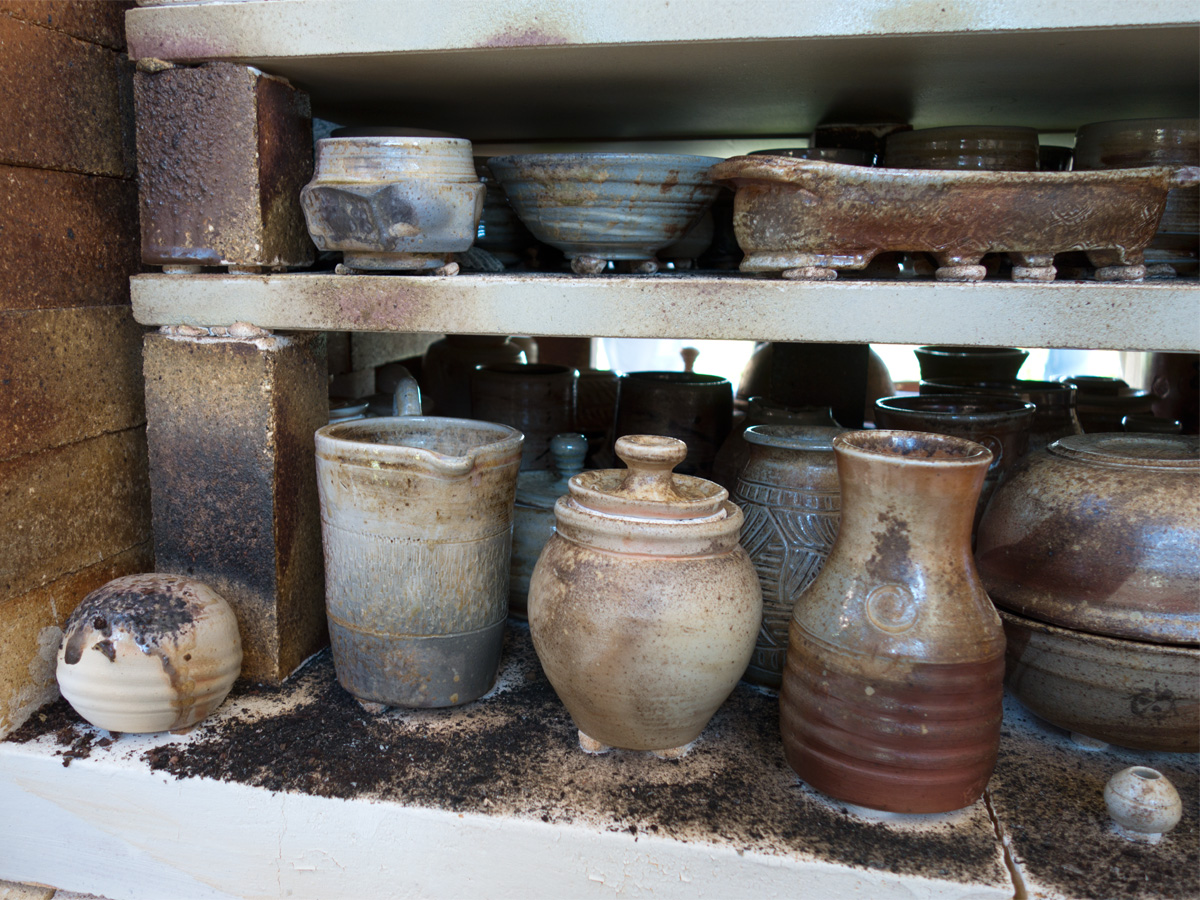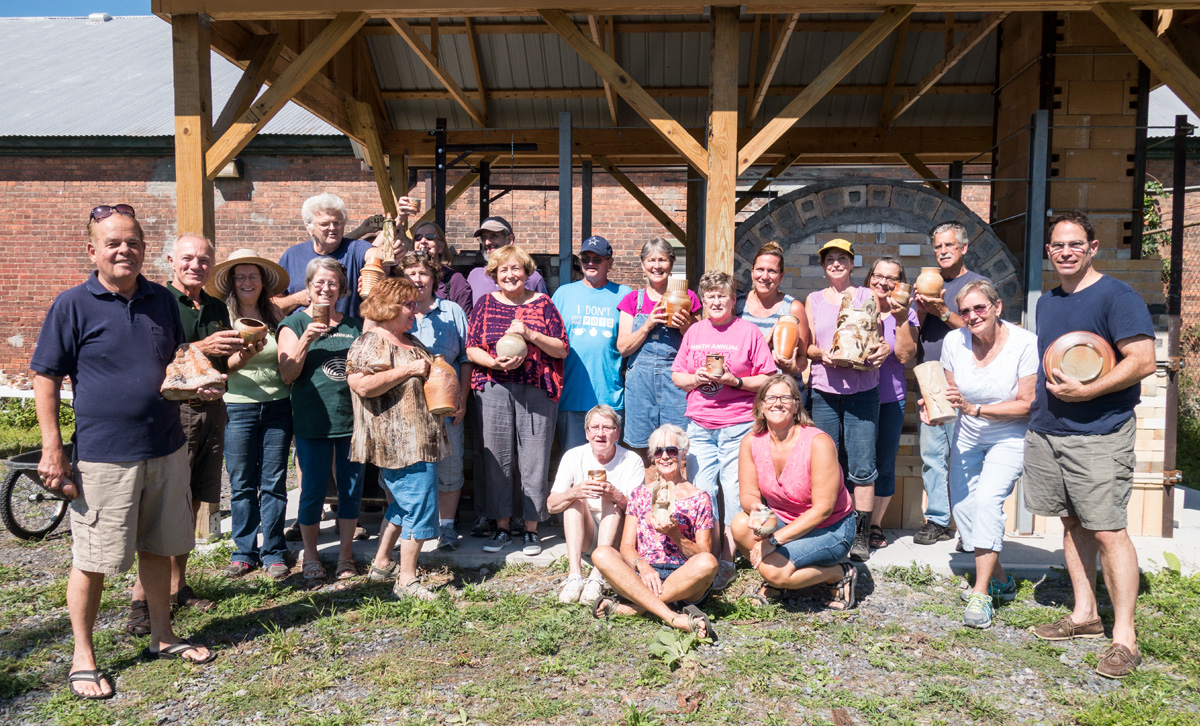The first firing in Bruno was unloaded on Saturday, August 20th at 10 a.m. There were two dozen plus potters/sculptors on hand to experience and help with the unloading. I admit that I peeked at the firing earlier in the week. The reason I opened Bruno before Saturday was my fear that the chamber cart would be sealed and we wouldn’t be able to open Bruno. Of course once I found out the chamber cart slid out smoothly I had to look and give several potters a peek at the firing.
At the unloading there were just as many potters/sculptors present to watch and help who didn’t have any of their work in Bruno. Dennis and I slowly slid the chamber cart out of Bruno to the ohs and ahs of everyone gathered around the kiln. It was a delight to hear all the happy sounds and I was so surprised that many didn’t reach out and begin picking up pieces!
We’d planned on unloading and placing the work piece by piece on tables as they had been loaded in Bruno. It was a happy surprise as everyone held back and waited as each piece was unloaded and put down on nearby tables. Once the pots were on the tables potters could pick them up and check them out for themselves! The ohs and ahs continued as three tables and two benches filled up with our work.
The top shelf had t he tallest pieces and Susan’s fox sculpture turned out lovely. Fred’s two sculptures on the top shelf had good ash melt and one was especially beautiful and a gem. Mary LaFleur’s bottle had been wadded with shells on it’s side and got some beautiful ash melt. The Bruno vases made the top shelf with all of them coming out very well ~ I was jumping up and down happy with them. The cones on the top shelf showed cone 10 barely going over which indicated a longer fire would have enhanced our firing.
he tallest pieces and Susan’s fox sculpture turned out lovely. Fred’s two sculptures on the top shelf had good ash melt and one was especially beautiful and a gem. Mary LaFleur’s bottle had been wadded with shells on it’s side and got some beautiful ash melt. The Bruno vases made the top shelf with all of them coming out very well ~ I was jumping up and down happy with them. The cones on the top shelf showed cone 10 barely going over which indicated a longer fire would have enhanced our firing.
The second, third and fourth shelves were shorter pieces which turned out very well. The cones on these shelves showed cone 10 down and cone 11 going over. So many lovely pieces were unloaded from these shelves ~ teapots, yunomis, bowls, plates, footed bowls and many other forms. In all, these shelves got lovely ash melt and heat work.
The bottom shelf was the shelf I was afraid of unloading as the pieces on the outside area of the shelf showed very dry ash and underfiring. As Josh Heller, Bruce Ross and David Smyth removed the shelves we saw that the middle of the shelf had some very nice ash melt, flame marks and heat work. There were several gems of the firing on this shelf which was an unexpected gift.
Almost every piece of wadding came off easily and very little grinding would be necessary to finish off pieces. I was amazed at how clean the shelves and posts were.
After unloading 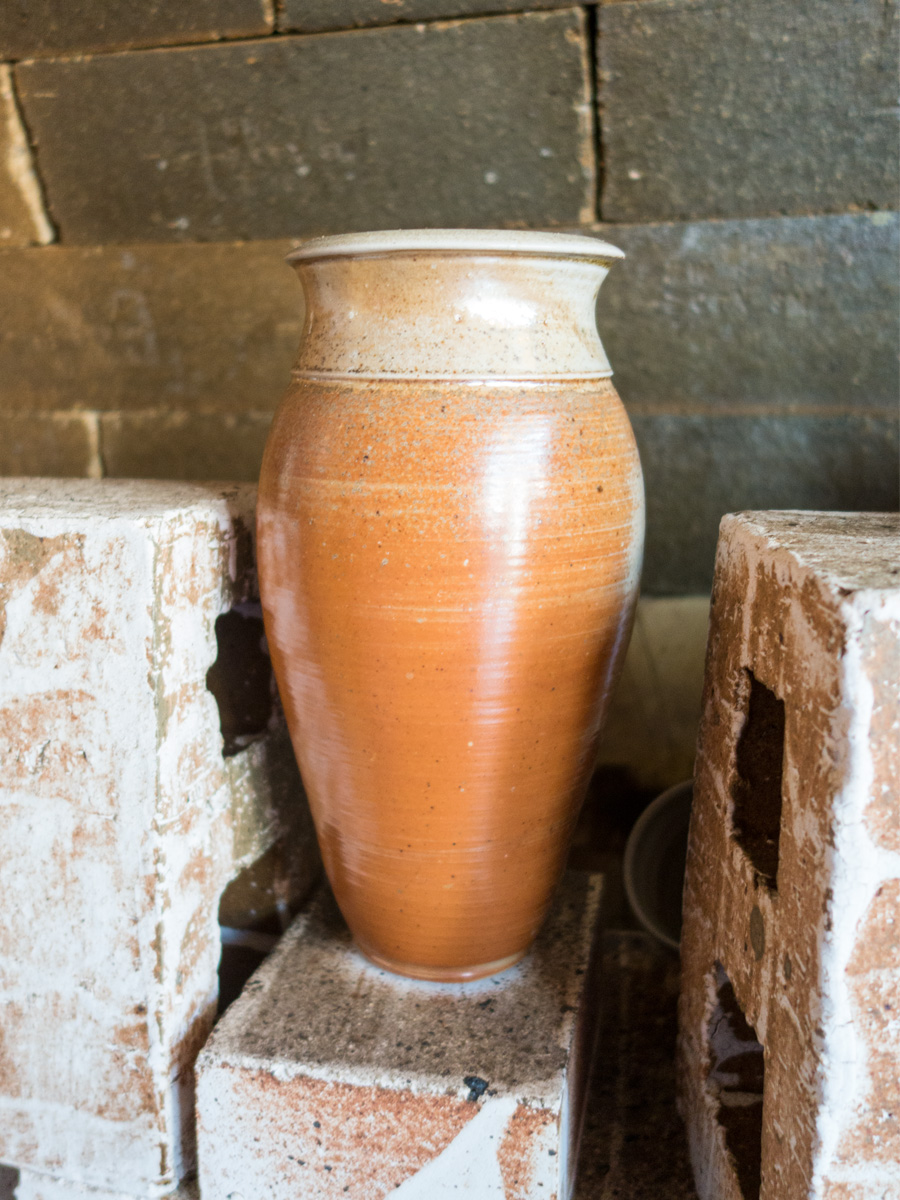 the chamber cart I turned to the bagwall. There was one vase and three small pieces on the bagwall and all three were beautiful. It was a bluff putting them up there ~ would they bloat, be dislodged by the flame or would wood being stoked knock them over or would they just get blasted by flame and heat? It turned out to be a great place to load work. I’d placed one cone pack there ~ all cones were down and melted but didn’t have much of a build up of ash.
the chamber cart I turned to the bagwall. There was one vase and three small pieces on the bagwall and all three were beautiful. It was a bluff putting them up there ~ would they bloat, be dislodged by the flame or would wood being stoked knock them over or would they just get blasted by flame and heat? It turned out to be a great place to load work. I’d placed one cone pack there ~ all cones were down and melted but didn’t have much of a build up of ash.
There were four pieces placed in front of the flues and they all turned out well. It’s a good place for pieces though the flame marks seemed muted.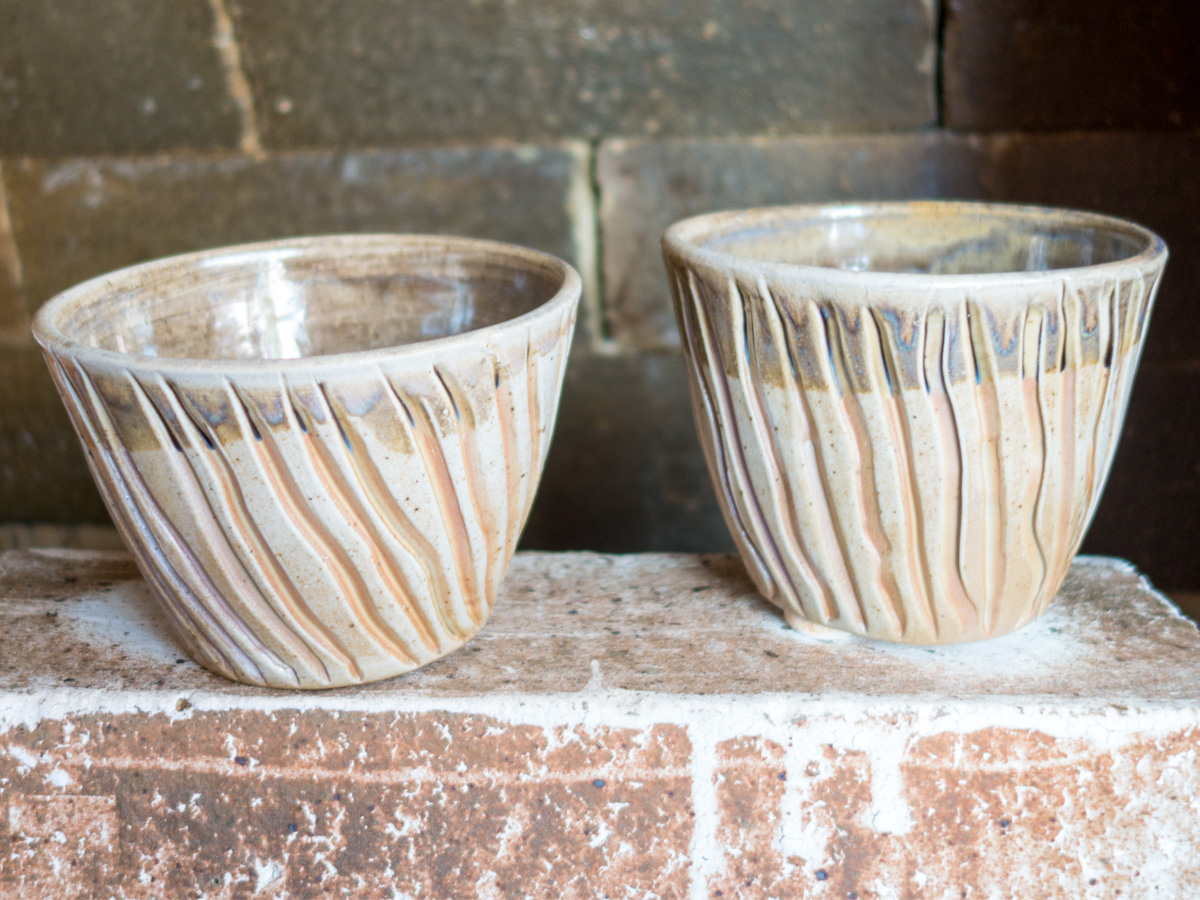
Next we unloaded the “secret place” inside the passive damper. This area turned out to not have gotten a lot of heat or ash and so all the work was dry and a bit crusty and will be re-fired.
The last area we unloaded was the Zone of Death. We had very few pots in the ZOD and all were crusty and underfired. This was a disappointment and I wondered if this would be a wasted area.
Jordan Becker came to consult with us after the firing and gave us some guidelines for future firings. One of his suggestions is that we keep the tip of the flame back a bit into the ZOD and wait between stoking to allow this to happen.
Jordan also suggested we change up the bagwall and pointed out some of the bagwall bricks had been displaced by wood during stoking of the back two stoke holes.
The group photograph at the end of our unloading shows the joy of a successful first Bruno firing.
We have changes here and there to make to our next firing and wood to gather and cut. Wood firing is a continual rotation of preparation, firing, unloading and clean up. We’re on a journey together and Dennis and I are grateful to each and every one of you in our Bruno Clay Community.

